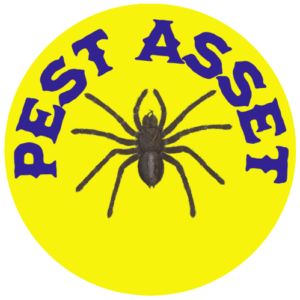Introduction
In the enchanting realm of nature, few creatures capture our imagination quite like the woolly bear caterpillar. These pint-sized, furry explorers are a common sight during autumn, often inching their way across sidewalks and gardens. But beyond their adorable appearance lies a world of wonder, and in this article, we delve deep into the life of these charming caterpillars.
Woolly Bear Caterpillar Anatomy
Body Structure
The woolly bear caterpillar, scientifically known as Pyrrharctia isabella, boasts a unique physical structure. Its body consists of thirteen segments, each adorned with tiny, hair-like setae. These setae, or bristles, are the source of the caterpillar’s distinctive, soft, and fuzzy appearance. Their black and reddish-brown coloration gives them a striking visual appeal, making them stand out even in the wild.
Growth Stages
Just like other caterpillars, the woolly bear undergoes metamorphosis, evolving through various developmental stages. It hatches from an egg and spends its early life munching on plant leaves, primarily herbs, and grasses. As it feeds and grows, it molts several times, shedding its skin and revealing its increasing length and vibrant colors.
Seasonal Significance
Predicting Winter
One of the most fascinating aspects of the woolly bear caterpillar is its association with weather prediction. Folklore suggests that the width of the reddish-brown band can provide clues about the upcoming winter. A wider band supposedly indicates a milder winter, while a narrower one predicts a harsher season ahead. Although this belief lacks scientific backing, it adds an intriguing layer to the caterpillar’s allure.
Behavior and Survival Tactics
Eating Habits
Woolly bear caterpillars are voracious herbivores. They feed primarily on low-growing plants and grasses, and their appetite is essential for fueling their growth. Despite their small size, they can consume significant amounts of vegetation, sustaining themselves throughout their larval stage.
Defense Mechanisms
In the wild, these caterpillars face numerous threats, including predators like birds and spiders. To defend themselves, woolly bears employ a clever strategy – they curl into a tight ball when threatened, concealing their soft body parts and exposing their bristly exterior. This protective behavior often deters potential attackers.
Life Cycle
Pupation
After reaching a certain size and undergoing several molts, the woolly bear caterpillar enters a pupal stage. During pupation, it undergoes a remarkable transformation, encasing itself in a silk cocoon. Inside this cocoon, it metamorphoses into a pupa before emerging as an adult moth.
Adult Moth
The adult woolly bear moth is quite different from its caterpillar counterpart. With a wingspan of around 1.5 to 2 inches, it boasts a striking coloration of white and brown. Unlike its larval stage, adult moths are nocturnal creatures, often seen fluttering around gardens and meadows during the night.
Folklore and Cultural Significance
Native American Beliefs
Woolly bear caterpillars hold a special place in Native American folklore. Several tribes believe that the caterpillar can predict the severity of the upcoming winter. For instance, the Navajo people associate a narrow reddish-brown band with a harsh winter, while a broader band signifies a milder season. This belief is woven into their cultural practices, making the woolly bear a symbol of wisdom and foresight.
Festival Celebrations
In some regions of the United States, annual festivals celebrate the woolly bear caterpillar. Vermilion, Ohio, for example, hosts the Woollybear Festival, featuring a parade and caterpillar-themed activities. The festival not only honors the caterpillar’s supposed weather-predicting abilities but also serves as a community gathering and a source of local pride.
Conservation Efforts
Habitat Preservation
As urbanization and habitat destruction continue, the natural habitats of woolly bear caterpillars are at risk. Conservationists and environmentalists are working diligently to preserve the areas where these caterpillars thrive. Protecting their natural habitats ensures that future generations can continue to marvel at these remarkable creatures.
Conclusion
In conclusion, the woolly bear caterpillar is a fascinating creature that has captured the curiosity of nature enthusiasts for generations. Its unique appearance, growth stages, intriguing folklore associations, and cultural significance make it a compelling subject for study and admiration. As we’ve explored in this extensive article, these charming caterpillars offer a glimpse into the wonders of the natural world, where even the smallest creatures can inspire awe and wonder.



